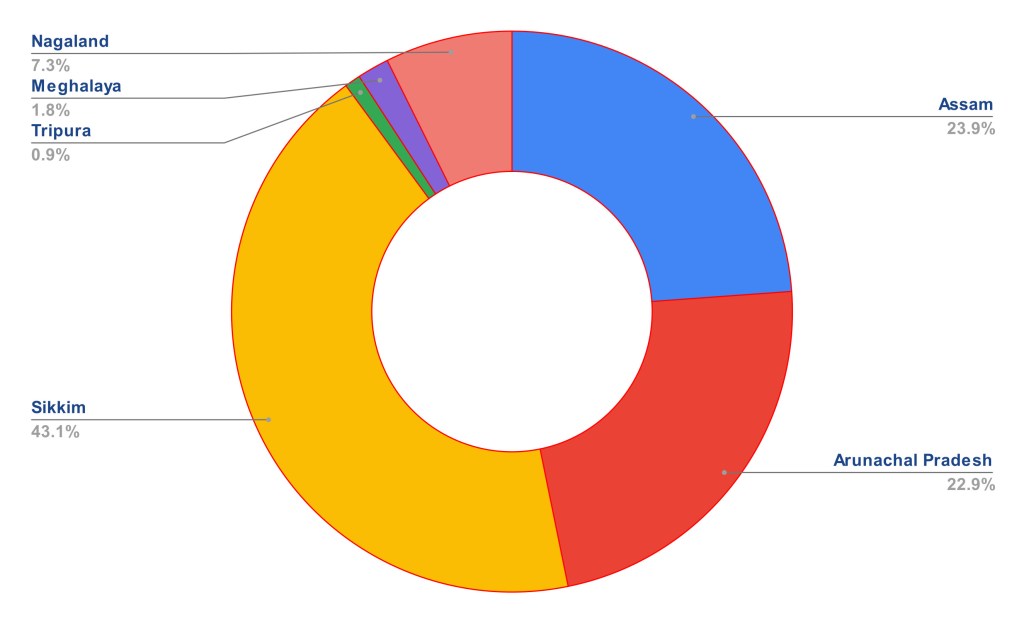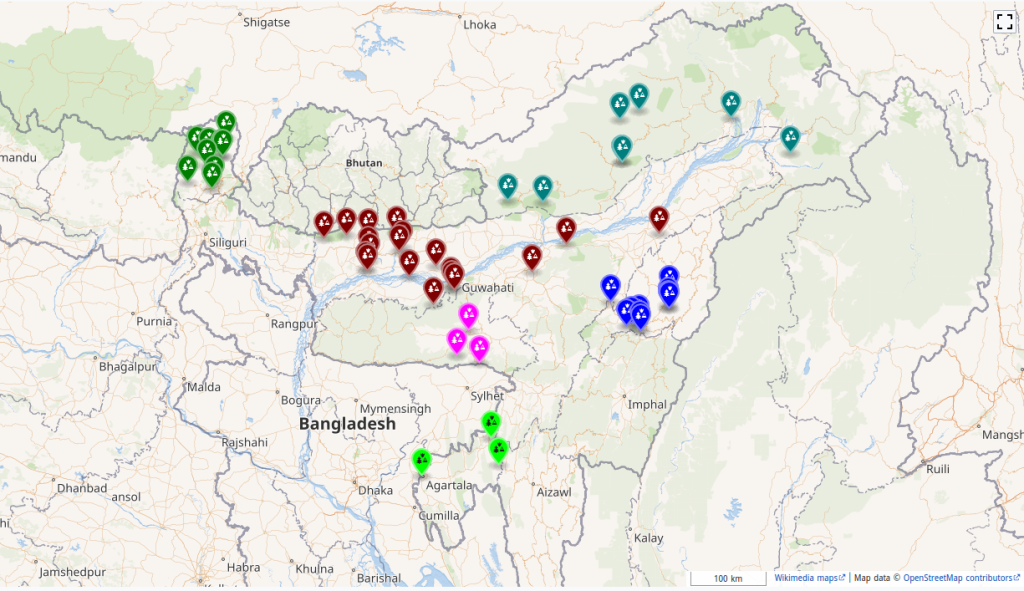The north-eastern region of India is renowned for its breathtaking landscapes and mountainous terrain, characterized by its fragility, marginality, and inaccessibility. The north-eastern states of Assam, Arunachal Pradesh, Manipur, Meghalaya, Mizoram, Nagaland, Sikkim and Tripura lies between the high mountains of Nepal and Bhutan to the west, Tibetan plateau to the north, valleys of Myanmar to the east and northern hilly regions of West Bengal and Bangladesh to the south, showcasing remarkable geographical, ethnological and cultural diversity. This region, with 64% (255,000 sq.km.) of its total geographic area under forest cover, is home for two significant biodiversity hotspots, namely the Indo-Burma and Himalayan regions and lies close to the Mountains of Southwest China biodiversity hotspot. The area supports rich floral biodiversity ranging from tropical rainforests to alpine scrub and hosts a rich variety of wildlife including iconic animal and bird species such as the Red pandas, Marble cats, clouded leopards, leaf monkeys, golden langurs, greater adjutant storks, blyth’s paradise flycatchers, satyr tragopans etc. and, it boasts a plethora of butterfly species, including the Kaiser-i-Hind, Bhutan Glory, Brown Gorgon, and Yellow Gorgon, Moth Butterfly, Small Tawny Wall, among many others. This exclusive vast remote utopia with its magnificent richness of species diversity undoubtedly stand out to be a thriving and potential haunt for every naturalist organizations and groups including the Wiki Loves Butterfly (WLB) project, which started unfurling its wings of activities in quest of the gem of butterfly diversities and exquisite habitats thereon.
Although a paradise for biodiversity lovers, north-east India is no utopia as it poses significant challenges for conservation efforts like ours. The difficult, remote and sometimes inaccessible terrains, domestic and international border disputes, threats triggered by insurgency and terrorism, apathy from different governmental departments and organization, lack of resources and amenities, human-wildlife conflict etc. are some of the many challenges at different levels which are beyond our control. The unpredictable and highly inclement climatic condition of the region often leading to unexpected droughts and deluge also adversely affects biodiversity.
So, we have relied on local wisdom a lot to overcome these challenges. Without the active and trusted assistance of local people, communities, forest departments and organizations, any similar efforts like ours, are bound to fail. It took us a lot of patience and continuous efforts to sensitize local communities regarding the value of diversity and the usefulness of conservation through regularly organized workshops, meet-ups, and extensive outreach programs. As we mainly focus on prospective habitat based single spots point richness (i.e. number of species found at a single point in a given space) and alpha (α-) richness (i.e. number of species found in a small homogeneous area) while selecting target areas of documentation, it ensures holistic diversity of species of a province or a state in the long run. For example, we have invested to form a team of local butterfly enthusiasts in the state of Sikkim, who are insightful about the diversity of butterflies in their state and with their repeated visit to the hotspots, WLB has managed to upload 47 valued images from Sikkim only for unique live butterflies, for which we did not have any images on Wikimedia Commons beforehand.


But even with all our efforts, we have managed to run our projects in only 36 out of 126 districts of north-eastern states of India during our eight years of journey. There are still some states like Manipur and Mizoram which did not see any WLB action but our team in Sikkim has managed to set foot in every district in the state and uploaded 25% of all photographs uploaded from the entire north-east India. We still have a long way to go.

Can you help us translate this article?
In order for this article to reach as many people as possible we would like your help. Can you translate this article to get the message out?
Start translation
